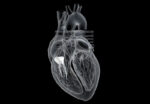Over time, percutaneous coronary intervention (PCI) with drug coated balloons (DCB) have been shown more beneficial than conventional PCI. However, in many cases, stenting is required to treat suboptimal results. Even though several studies have looked into this scenario, long term durability still calls for research. This was a 5 year thorough analysis of the<a href="https://solaci.org/en/2024/03/09/in-pact-outcomes-at-5-years/" title="Read more" >...</a>
ERCTO Registry: Current Results for Percutaneous Treatment of Chronic Total Occlusions
Chronic total occlusions (CTO) occur in up to 20% of patients undergoing diagnostic angiographic studies. Over the past two decades, the optimization of recanalization techniques, the development of new specialized devices, and improvement in operator skill have contributed to an increased procedural success rate, reaching 90%. However, specific complications such as collateral perforation and access<a href="https://solaci.org/en/2024/03/08/ercto-registry-current-results-for-percutaneous-treatment-of-chronic-total-occlusions/" title="Read more" >...</a>
Edge-to-Edge Repair in Cardiogenic Shock
The edge-to-edge approach with MitraClip has been established as a valid strategy for patients who experience severe symptomatic mitral regurgitation (MI) with high risk for surgery, currently with a IIa indication. MI complicated by cardiogenic shock, which results in a high risk for conventional valve surgery, is a particularly complex scenario. In such a case,<a href="https://solaci.org/en/2024/02/26/edge-to-edge-repair-in-cardiogenic-shock/" title="Read more" >...</a>
LIFE-BTK | Critical Limb Ischemia: Use of Bioresorbable Scaffold in Infrapatellar Lesions (LIFE-BTK)
Advanced stages of peripheral artery disease cause significant limitations in patients, such as critical limb ischemia (CLI), which manifests with resting pain and gangrene or ulcers of difficult resolution. Uncontrolled progression of this pathology might lead to major amputation, reduced life expectancy and increased healthcare costs. Prior research on infrapopliteal territory have shown contradicting results.<a href="https://solaci.org/en/2024/01/19/life-btk-critical-limb-ischemia-use-of-bioresorbable-scaffold-in-infrapatellar-lesions-life-btk/" title="Read more" >...</a>
Long-term Results of Coronary Bifurcation Lesion Treatment in Diabetic Patients
The effects of diabetes on patients with coronary artery disease are well-known, and their outcomes after angioplasty are less favorable, with a higher rate of restenosis, recurrent acute myocardial infarction, and stent thrombosis. Despite advances in drug-eluting stents and procedural techniques, the treatment of coronary bifurcation lesions in diabetic patients shows less positive clinical outcomes<a href="https://solaci.org/en/2024/01/18/long-term-results-of-coronary-bifurcation-lesion-treatment-in-diabetic-patients/" title="Read more" >...</a>
TricValve: 12-Month Evolution
Tricuspid regurgitation has become increasingly common, and current pharmacological treatment options are limited. In turn, surgery, which is a complex alternative, carries considerable rates of complications and mortality. In response to this issue, various percutaneous systems are being developed, such as edge-to-edge treatment, percutaneous annuloplasty, and caval valve implantation (CAVI), among others. In the analysis<a href="https://solaci.org/en/2024/01/18/tricvalve-12-month-evolution/" title="Read more" >...</a>
Evolution of Bicuspid Valves at 12 Months
Severe aortic stenosis due to a bicuspid aortic valve (BAV) is uncommon, especially in individuals under 65 years of age. While there are usually no significant differences according to the type of valve when it comes to surgery, with transcatheter aortic valve replacement (TAVR) some may arise. TAVR has seen significant advancements in the treatment<a href="https://solaci.org/en/2024/01/12/evolution-of-bicuspid-valves-at-12-months/" title="Read more" >...</a>
Retrograde Approach to Chronic Total Occlusions: Techniques and Outcomes According to the PROGRESS-CTO Registry
The retrograde approach for recanalizing chronic total occlusions (CTO) has undergone significant evolution since its introduction in 1990, improving both in terms of techniques and specialized materials. The increased skill applied to this strategy has resulted in increased success rates for the treatment of CTO in sites with an adequate volume of procedures. Given the<a href="https://solaci.org/en/2024/01/08/retrograde-approach-to-chronic-total-occlusions-techniques-and-outcomes-according-to-the-progress-cto-registry/" title="Read more" >...</a>
Outcomes of the Use of Drug Coated Balloons in the Treatment of De Novo Coronary Lesions
Drug coated balloon (DCB) angioplasty offers a novel strategy for treating coronary artery disease. Studies assessing this strategy have shown clinical outcomes comparable to drug-eluting stents’ (DES) in patients with in-stent restenosis and de novo disease in small vessels. However, evidence for the use of DCB in large coronary vessels is limited. This observational, retrospective study DCB<a href="https://solaci.org/en/2023/12/21/outcomes-of-the-use-of-drug-coated-balloons-in-the-treatment-of-de-novo-coronary-lesions/" title="Read more" >...</a>
See the Presentations of the 2023 Perú Sessions
The XLVII SOLACI Regional Sessions – 16th Andean Region took place in Lima, Peru, between November 16 and 17, 2023.It was an extremely successful event that featured the participation of prestigious national and international guests and a high-level scientific program. Below, we share some of the presentations that were made during the Sessions. Dra. Carla<a href="https://solaci.org/en/2023/12/20/see-the-presentations-of-the-2023-peru-sessions/" title="Read more" >...</a>









